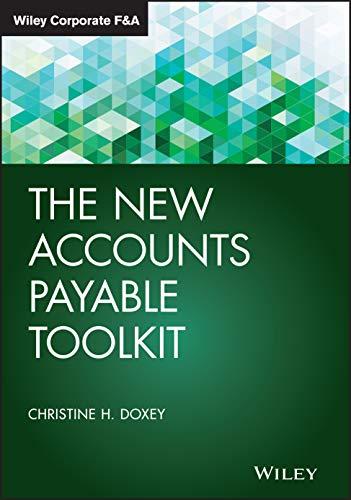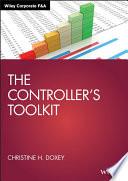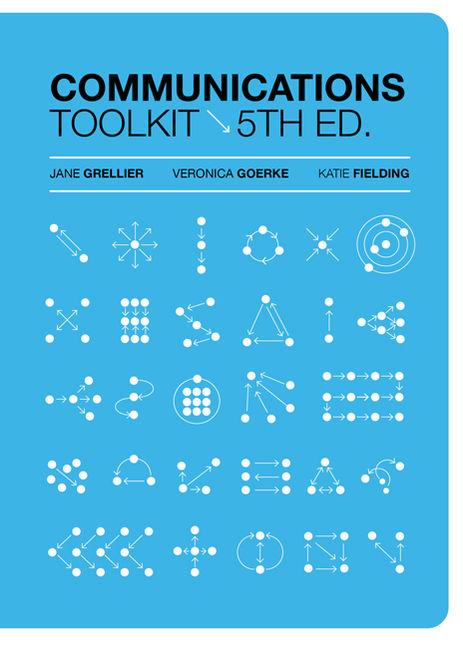The New Accounts Payable Toolkit
Christine H. Doxey
Copyright © 2021 by John Wiley & Sons, Inc. All rights reserved.
Published by John Wiley & Sons, Inc., Hoboken, New Jersey. Published simultaneously in Canada.
No part of this publication may be reproduced, stored in a retrieval system, or transmitted in any form or by any means, electronic, mechanical, photocopying, recording, scanning, or otherwise, except as permitted under Section 107 or 108 of the 1976 United States Copyright Act, without either the prior written permission of the Publisher, or authorization through payment of the appropriate per-copy fee to the Copyright Clearance Center, Inc., 222 Rosewood Drive, Danvers, MA 01923, (978) 750-8400, fax (978) 646-8600, or on the Web at www.copyright.com. Requests to the Publisher for permission should be addressed to the Permissions Department, John Wiley & Sons, Inc., 111 River Street, Hoboken, NJ 07030, (201) 748-6011, fax (201) 748-6008, or online at www.wiley.com/go/permissions.
Limit of Liability/Disclaimer of Warranty: While the publisher and author have used their best efforts in preparing this book, they make no representations or warranties with respect to the accuracy or completeness of the contents of this book and specifically disclaim any implied warranties of merchantability or fitness for a particular purpose. No warranty may be created or extended by sales representatives or written sales materials. The advice and strategies contained herein may not be suitable for your situation. You should consult with a professional where appropriate. Neither the publisher nor author shall be liable for any loss of profit or any other commercial damages, including but not limited to special, incidental, consequential, or other damages.
For general information on our other products and services or for technical support, please contact our Customer Care Department within the United States at (800) 762-2974, outside the United States at (317) 572-3993, or fax (317) 572-4002.
Wiley publishes in a variety of print and electronic formats and by print-on-demand. Some material included with standard print versions of this book may not be included in e-books or in print-on-demand. If this book refers to media such as a CD or DVD that is not included in the version you purchased, you may download this material at http://booksupport.wiley. com. For more information about Wiley products, visit www.wiley.com.
Library of Congress Cataloging-in-Publication Data
Names: Doxey, Christine H., 1955- author. | John Wiley & Sons, Inc., publisher.
Title: The new accounts payable toolkit / Christine H. Doxey.
Description: Hoboken, New Jersey : Wiley, [2021]
Identifiers: LCCN 2020055859 (print) | LCCN 2020055860 (ebook) | ISBN 9781119700500 (hardback) | ISBN 9781119700531 (adobe pdf) | ISBN 9781119700524 (epub)
Subjects: LCSH: Accounts payable. | Invoices.
Classification: LCC HF5681.A27 D69 2021 (print) | LCC HF5681.A27 (ebook) | DDC 658.15/26—dc23
LC record available at https://lccn.loc.gov/2020055859
LC ebook record available at https://lccn.loc.gov/2020055860
Cover Design: Wiley
Cover Image: yewkeo/Getty Images
Printed in the United States of America.
SECTION ONE
About This Toolkit
The New AP Toolkit is an excellent reference book for anyone new to the AP or P2P space. It can be used to evaluate current processes and identify improvements. This book also serves as a reference for AP managers and directors, P2P managers and directors, shared services managers and directors, external and internal auditors, internal control professionals, CPOs, controllers, and CFOs. Here’s how the book is organized.
INDEX OF AP TOOLS
As an additional bonus, AP Tools are provided within each applicable section. Each AP Tool is numbered for your reference and cross-referenced to a chapter. Every AP Tool includes an introduction titled “About This Tool” which serves as an overview of the tool. Each type of tool is classified as a checklist, template, or best practice.
This index provides the listing of all the tools for controllers that are included in this book and provides a quick glance of an inventory of all the helpful tools provided. The index is organized by: (1) Section Number, (2) Section Title, (3) Chapter Number, (4) Chapter Title, and (5) AP Tool Title and Number.
Index of AP Tools (1) Section Number (2) Section Title (3) Chapter Number (4) Chapter Title (5) AP Tool Title and Number
1 Introduction 1 About This Toolkit 2 The New AP Department 2 The New AP Department
1. AP Process Improvement and Automation Checklist
2. Procurement Spend Analysis
3. Types of Internal Controls
4. The Benefits of Segregation of Duties (SoD) Controls
5. Mitigating Risk with Internal Controls
6. Compensating Controls to Mitigate Risk
7. Your Roadmap for Implementing an Internal Controls Program
8. The Top Twenty Controls for the AP Process
9. Internal Controls Checklist
10. Sample Internal Controls Program for Accounts Payable for Companies Using the SAP ERP
11. Metrics to Drive Process Improvements 3 Automating the AP Process (Continued )
15. Other Recommendations for P2P Transformation 16. Managing Change
17. P2P Transformation Metrics
18. Streamlining Your P2P Process Without Automation 19. How to Begin Your P2P Automation Journey
Five Steps to Use When “Fine Tuning” Your Supplier Master File
Supplier Diversity
Eight Critical Supplier Master Practices
the Supplier Master File
Four Best Practices to Consider for the
32. Five Factors Driving the Automation of Invoice Processing
33. The Most Common Forms of Invoice Automation
34. Six Best Practices for Invoice Processing
35. Three Components of Imaging and Workflow
36. Nine Performance Indicators for Invoice Processing
37. The Twenty-Five Top Reasons for Problem Invoices
39. P-Card Program Implementation Best Practices
40. The P-Card Holder Agreement 41. The P-Card Scorecard
Payment Practices
Payments
Procedures for Managing your Company’s Escheatment Obligations
The New AP Department
INTRODUCTION
Improving the financial transaction processes has been the focus of most organizations since the 1980s. Financial transaction processing includes those traditional “back office” processes such as procure to pay (P2P), payroll, travel and entertainment (T&E), fixed asset accounting, and accounts receivable. There has been an evolution of transitioning financial transaction processes to financial management centers, then to shared service centers, and finally to an outsourced model. In today’s economy, organizations are now focused on process improvements and automation initiatives to garner additional efficiencies and cost reduction opportunities. It’s not just about transitioning processes to shared service centers any more.
CASE STUDY: JOURNEY TO EXCELLENCE
In 1987, Digital Equipment Corporation took a futuristic approach to improving the productivity of their financial transaction processes. Prior to 1987, Digital established several manufacturing plants across the United States. Each plant was supported by a separate general ledger and stand-alone accounts payable, and T&E processes. Some plants even had their own payroll processes. The inefficiencies and cost of these disparate ledgers and processes was recognized. As a result, a project was initiated to consolidate twenty-eight general
Christine H. Doxey.
ledgers and financial transaction processes into four financial management centers. The financial management centers were eventually transited to a single US shared service center in the mid 1990s before Digital was acquired by Compaq Computer Corporation in 1998. Compaq was then acquired by Hewlett Packard (HP) in 2002.
HP’s journey to excellence can be attributed to the company’s drive for value and innovation. “HP was an early adopter of the shared services model when it began this journey over 15 years ago. In the early 1990s, the company set a strategic goal to reduce operating costs by 30% within three years. At that time, the outsourcing market had not yet come into being for F&A. The only viable means of achieving the type of savings HP had targeted was to build captive shared services operations. As part of that effort HP wanted to integrate the back-end work of individual business units and countries, and reap the benefits of consistency in process, operating efficiency, and first time quality.”1
FOCUS ON CORPORATE PRODUCTIVITY
Many organizations have not had the opportunity to realize the tremendous cost savings that HP did with the acquisition of Compaq and the transition to a shared service center organization. So they continue to focus on productivity improvements in financial transaction processing and are spotlighting the P2P cycle.
Additionally, many organizations have found the hidden value that the accounts payable process, as a key component of the P2P cycle, can bring to an organization in cost saving opportunities and process improvements. These cost saving opportunities and improvements can be recognized by process efficiencies and automation. This continues to be a critical focus in today’s difficult economy. Recommendations and best practices for improving the P2P process are included in the following section.
The New AP Professional
The new AP professional understands the importance of eliminating the silos within the process and has a good understanding of all the components that impact the cost, accuracy, and controls of the accounts payable process. The AP process flow provides an overview of the end-to-end accounts payable process.
1Dian Schaffhauser, “HP’s Journey to Shared Services Finance & Accounting Success,” SourcingMag, September 24, 2007, accessed on September 9, 2020, https://sourcingmag.com/2007/09/ hps-journey-to-shared-services-finance-accounting-success/.
The new AP professional is not just focused on transaction process, but on automation and process improvements that can reduce cost and improve internal controls. The new AP professional has moved from a clerical role to financial and business analyst role that looks into new metrics, analysts, and automation solutions. With a continued focus on internal controls and risk management, the new AP professional will look into self-audit tools, payment audit processes, and implementing automated controls solutions. Today’s savvy AP professional is able to link all AP processes together and understands the linkage with their company’s P2P process. The new professional is able to break down the silos and make recommendations that will benefit the entire organization.
ACCOUNTS PAYABLE AND PROCURE-TO-PAY (P2P) PROCESS IMPROVEMENTS
AP represents an organization’s obligation to pay off a short-term debt to its creditors. AP also refers to short-term debt payments to suppliers and banks.
Many organizations no longer look at accounts payable as a stand-alone entity. The integrity of AP results are directly influenced by the functions of securing and qualifying sources of supply; initiating requests for materials, equipment, merchandise, supplies, or services; obtaining information as to availability and pricing from approved suppliers; placing orders for goods or services; receiving and inspecting or otherwise accepting the material or merchandise; accounting for the proper amounts due to suppliers; and processing payments in a controlled and efficient manner.
“Shared services” is a term defining an operational philosophy that involves centralizing those administrative functions of a company that were once performed in separate divisions or locations as noted in the Case Study: Journey to Excellence section. The focus of shared service organizations is not only on financial transaction processing, but on procurement, inventory accounting, payroll, human resources, and information technology.
Moving the AP process to a shared service center can generate significant cost savings, but all its processes should be understood. Any process weaknesses, control issues, and risk should be defined and mitigated. To ensure the success of any AP transition, all process improvements should be realized before centralizing or moving accounts payable to a shared service organization.
AP TOOL 1: AP PROCESS IMPROVEMENT AND AUTOMATION CHECKLIST
About This Tool: The “touchless” AP process isn’t too difficult to achieve. A savvy AP leader should have the strategy in place to move to a paperless environment. It all starts with implementing some best practices including electronic payments, the automated clearing house (ACH) remittance, and the automated workflow process. Best practices establish the foundation for accounts automation and the achievement of your “touchless” process. The success of your new “touchless” process can be measured not only by improvements in metrics, but by the results of your automated self-assessment process. Lastly, dynamic discounting is a “win-win” option for both buyers and suppliers in the “touchless” accounts payable process.
Examples of AP best practices include delegation of authority via workflow. Many leading practice companies are already paying their suppliers electronically, but are now utilizing the ACH remittance process to reduce paper. And to ensure that your “touchless” environment is working properly, I suggest using an automated self-assessment process that validates the accuracy of your payment process. Lastly, leading practice accounts payable companies also consider dynamic discounting solutions. We’ll now explore the components of the “touchless” accounts payable process in detail as listed in the following table.
1. Automated PO Requisition Process: Upon approval, POs can be electronically invoiced from suppliers directly for a paperless process in which automated matching occurs between the PO and the invoice when it arrives to validate price, quantity, line amount, and items ordered. All invoices matched can be tracked against the PO until the PO is closed to account for blanket POs or partial payment against an open PO.
2. eInvoicing: eInvoicing is the exchange of the invoice document between a supplier and a buyer in an integrated and agreed-upon electronic format with the goal of reducing paper and cost. Imagine no more paper invoices!
3. Automated Approval Process: In an automated approval process, the invoice approval process is linked to your company’s delegation of authority (DoA) policy. The invoice approval process is completely automated based on defined rules via workflow. The workflow determines if an invoice needs approval; who the appropriate approvers are; and in what order approvers should approve payment of the invoice. The workflow then sequentially asks each approver in the approval list to approve invoices online. For example, you can define a rule so invoices over $100,000 (or a specific amount designated in your DoA policy) require CFO approval and then CEO approval.
4. Link Approvals to Job Levels: Most leading practice companies link the DoA policy to the job levels within the employee master file. A DoA table is then established as the driver of the approval workflow. If an approver moves to a different position or department, or leaves the company, the approval tables are automatically updated.
5. Automated ACH Remittance: As companies increase their electronic payments to suppliers, many are moving toward sending the automated remittance advice as confirmation indicating that the invoice has been paid. This best practice helps reduce paper and moves closer to a “touchless” process.
6. Supplier Portal: As supplier portals move beyond invoice status tools, many solutions are now delivered as a shared buyer service which accommodate eInvoicing and provide many additional benefits. Supplier portals provide:
■ Reduction in paper invoices as suppliers send their invoices electronically;
■ Faster transactions with integration to ERP software;
■ Stronger supplier relationships with a well-defined onboarding process and real-time invoice status;
■ Digital signatures to guarantee authenticity and security;
■ Flip purchase orders for easy invoicing;
■ The ability to correct errors on the spot to prevent payment delays further down the line;
■ The ability to begin using sales catalogs for greater accuracy.
7. Accounts Payable Self-Assessment Process: The goal of any accounts payable department is to pay a supplier “once and only once.” Rather than have a third party or external audit firm identify a control weakness, many companies have worked with a solution provider to implement a self-assessment process that identifies a possible duplicate payment before the payment is initiated. This software considers “fuzzy” logic algorithms that flag a potential duplicate or erroneous payment. This self-assessment process can often be included in a company’s internal control program.
8. Dynamic Payables Discounting: Dynamic discounting is a solution that gives buyers more flexibility to choose how and when to pay their suppliers in exchange for a lower price or discount for the goods and services purchased. The “dynamic” component refers to the option to provide discounts based on the dates of payment to suppliers. Solution providers help both buyers and suppliers optimize their working capital positions by: providing a collaborative platform where buyers, suppliers, and third-party financing providers can negotiate and execute early payment offers.
P2P REPORTING, UNDERSTANDING, AND PERSPECTIVE
Purchasing Insight notes that, “P2P is all about helping to optimize the processes associated with purchasing and recognizing that the process does not end at the purchase order but extends to include accounts payable and payment processes.”2
2Pete Loughlin, “Definition of Procure to Pay,” Purchasing Insight, accessed on September 8, 2020, http://purchasinginsight.com/definition-of-purchase-to-pay/.
Purchasing Insight noted that the P2P process extends even into the future. The process includes the strategies and technologies that are drivers of the procurement process. These strategies and technologies apply to the procurement spend analysis process as defined in the next section.
AP TOOL 2: PROCUREMENT SPEND ANALYSIS
About This Tool: This tool provides insight on how to achieve accurate and timely spend analysis that is often driven by the procurement process.
1. Identify Leverage with Existing Suppliers: Determine the “parent-child relationships” within the supplier master file and determine if multiple contracts can be consolidated or leveraged.
2. Supplier Rationalization: This is a straightforward analysis commonly using the Pareto principle (80/20) that highlights how many suppliers comprise 80% of the spend for each category. Using this type of analysis we can quickly identify the categories where there are too many suppliers comprising the bulk of the spending.
3. Perform a Spending Stratification Analysis: This analysis will highlight the volume of low dollar invoices processed by accounts payable. The results will indicate if these transactions can be moved to a P-Card or to an automated process.
4. Preferred Supplier Spend: Many organizations have a preferred supplier list. Including this information in the spend analysis application will provide visibility into two areas: (1) categories where preferred suppliers are in place but not used, and (2) categories where no preferred supplier exists.
5. Spend by Buying Channel: One of the benefits of spend analysis is that it helps to identify process inefficiencies. Companies with procurement systems in place can quickly identify business units and individuals that are circumventing existing processes. Driving spends toward approved buying channels will improve overall controls, yield better compliance, improve data quality, lead to faster sourcing cycles, and provide term discount opportunities. This will also reduce accounts payable costs associated with check requests.
6. Purchase Price Variance: This step in the process highlights that different prices may be paid for the same good or service.
7. Sourcing Compliance: The final step includes a review of key contracts to determine if there are significant variances from the contract’s terms and conditions.
8. Quarterly Spend Analysis: Implement a process to track supplier spending on a quarterly basis. This process can be used to track the results of the implementation of a strategic sourcing initiative.
STRATEGIC SOURCING
Strategic sourcing was first established by General Motors in the 1980s and is now a common tool in the procurement toolkit. Strategic sourcing is dependent upon the results of the spend analysis process described in the previous section.
Strategic sourcing is often used as a procurement best practice to source high-value goods and services used in the production process along with large volume, and low-value non-production goods and service. The steps in the strategic sourcing process include:
■ Review the results of the spend analysis and determine the suppliers to focus on.
■ Review the pricing differences offered for the same goods and services. Also, review the terms and conditions of the contracts currently in place.
■ Determine the cost benefit analysis of moving to a single supplier.
■ Schedule discussions with targeted suppliers.
■ As noted in the previous section, review the results on a quarterly basis and update the strategic sourcing plans.
OTHER PROCURE-TO-PAY BEST PRACTICES
Here are some additional best practices that should be considered to improve efficiencies within the P2P process that include:
■ Perform an annual “clean-up” of the supplier master file which includes either purging or blocking suppliers that have not had any activity for eighteen months.
■ Establish a process to designate P-Card suppliers within your organization’s supplier master.
■ Review the supplier master file on a quarterly basis to combine multiple suppliers and multiple remit to addresses.
■ Implement a company-wide procurement policy which specifies that purchase orders are required for all purchases over a specified dollar limit which is depending on the size of the organization. The procurement policy supports the requirement that a purchase order is needed for every obligation. The procurement policy also stipulates a P-Card will be used for any purchases below the specified dollar amount. An example of recommended best practices for implementing and expanding a P-Card program are included in the next section.
AP PROCESS IMPROVEMENT IMPACTS ON WORKING CAPITAL
Working capital is an important measure of an organization’s efficiency, its short-term financial health and operating liquidity. Positive working capital means that the organization is able to pay off its short-term liabilities without increasing debt. Negative working capital means that an organization currently is unable to meet its short-term liabilities with its current assets (cash, accounts receivable, and inventory).
AVERAGE PAYABLE PERIOD
Each time a purchase is made from a supplier without paying for it at the time of the purchase, an account payable is created (a payable) for the business. Accounts payable are amounts owed to suppliers that are payable sometime within the near future – “near” meaning 30 to 90 days.
■ The average payable period is the best indicator of success in managing cash outflows.
■ Using the payable period to slow down outflows can significantly improve cash flow.
■ The accounts payable aging schedule is an important tool for keeping track of payables on a monthly or weekly basis.
MEASURING AVERAGE PAYABLE PERIOD
The average payable period measures the average amount of time each dollar of trade credit is used. That is, it measures how long a company uses their trade credit before paying the obligations to those businesses or individuals who extended credit to the company. This measurement gauges the relationship between trade credit and cash flow. A longer average payable period allows trade credit to be maximized. Maximizing trade credit means delaying cash outflows and taking full advantage of each dollar in the company’s own cash flow. The average payable period is calculated by dividing accounts payable by the average daily purchases on account:
Average Payable Period = Accounts Payable Balance
Average Dailly Purchases on Account
The average daily purchases on account are computed by dividing total purchases on account by 360:
Average Daily Purchases on Account = Annual Purchases on Accoount 360
The accounts payable balance and the total purchases on account from the prior year are usually accurate enough for analyzing and managing cash flow. However, if more recent information is available, such as the previous month’s accounts payable information, then use that instead. Be sure to compute the average daily purchases on account correctly using the number of days actually reflected in the purchases on account figure. For example, use 30 if one month’s accounts payable information is used.
WHEN TO TAKE A TRADE DISCOUNT
How do you know if it’s worth taking the discount? First the general rule on trade discounts: a company should always take advantage of trade discounts of 1% or more if the supplier requires full payment within 30 days. If suppliers offer payment terms beyond 30 days, it may be more advantageous to skip the trade discount and delay paying the supplier until the full payment is due.
For situations outside the scope of the general rule, or to test the general rule, a company can determine if taking a trade discount is advantageous. The following will help the company make that determination:
In order to determine if a trade discount is advantageous, consider the annualized interest rate you earn by taking the trade discount. If this annualized interest rate is greater than the interest rate charged to borrow the money from a bank, for example, then the discount is definitely worth taking. On the other hand, if the interest rate charged to borrow the money from a bank is greater than the annualized interest rate earned by taking the discount, then you shouldn’t take the trade discount.
What is your cost? Day 10
A 20 day loan to your supplier
What are you earning? vs.
When taking a trade discount, consider the early payment a loan to the supplier.
Take, for example, a supplier that offers a discount if their invoice is paid within 10 days, or accepts full payment within 30 days. When a company pays this supplier in 10 days, instead of waiting the full 30 days, this supplier is actually borrowing money from the company for 20 days. The amount of the discount is the interest the company earns on the loan to the supplier. If the company views the early payment as a loan to suppliers, a company can then determine the annualized interest rate they are actually earning. Once the company knows the annualized interest rate, they can then compare it to the cost of borrowing money and determine if taking the discount is worthwhile. The annualized interest rate is calculated as follows:
Annualized Interest from the Trade Discount
NEGOTIATING PAYMENT TERMS
Negotiating payment terms with suppliers and suppliers, or deferring expenses, are two more methods of delaying cash outflows. Negotiating extended payment terms with suppliers is a technique that can be used to delay cash outflows and improve overall cash flow. Most suppliers will require payment within 20 or 30 days after a company receives their bill. Some suppliers may be willing to negotiate longer credit terms. Their willingness to offer better credit terms may be based on one of the following factors included in the following list:
■ The company’s past and present business relationship with them
■ The company’s past payment history and perceived credit worthiness
■ The option to secure a large order or a company’s continued business
This is one of those situations where it can’t hurt to ask. But be prepared to justify the request. Suppliers will likely extend payment terms if presented with a strong case.
Dynamic Discounting
So why is dynamic discounting so compelling? Just consider what a 2% discount means for early payment in terms of return on capital. If, instead of earning interest on your cash you invest cash for 20 days to get a 2% return – that’s over 36% return on capita
Dynamic discounting solutions provide suppliers the flexibility to discount their approved invoices at any point up to the maturity date and pass on a portion of the finance charges to buyers. This functionality has gained acceptance and popularity as it offers financing to suppliers at attractive rates while delivering an additional income stream to buyers. Solution providers and banks facilitate the transactions through a simple, intuitive Web interface that provides visibility to all parties, including the ability to change rates and terms in real time, thus the term dynamic.
Many buyer companies are not nimble enough to take advantage of valuable discounts, while others do not have the required spend that will allow for discounts. Some have investment alternatives so attractive that they outweigh the opportunity cost of missing a discount. And for most buyers, extending payment terms is generally more beneficial for working capital management than capturing a few discounts from participating suppliers. On the other side, suppliers too often find themselves financing sales by factoring their accounts receivables or through asset-based lending, both expensive sources of capital. Some suppliers, particularly smaller companies, do not have access to either option and are frequently strapped for cash.
Dynamic discounting serves the cash management needs of buyers and suppliers alike. Solution providers create the technological framework to facilitate this process. The transaction can be self-funded by the buyer or a bank can stand in as a short-term lender. Through Web-based buyer-supplier networks, buyers are able to project compressed settlement terms through supplier discounts. Suppliers are able to pick and choose among an array of payment options for each outstanding invoice. Banks pay the bill and collect










